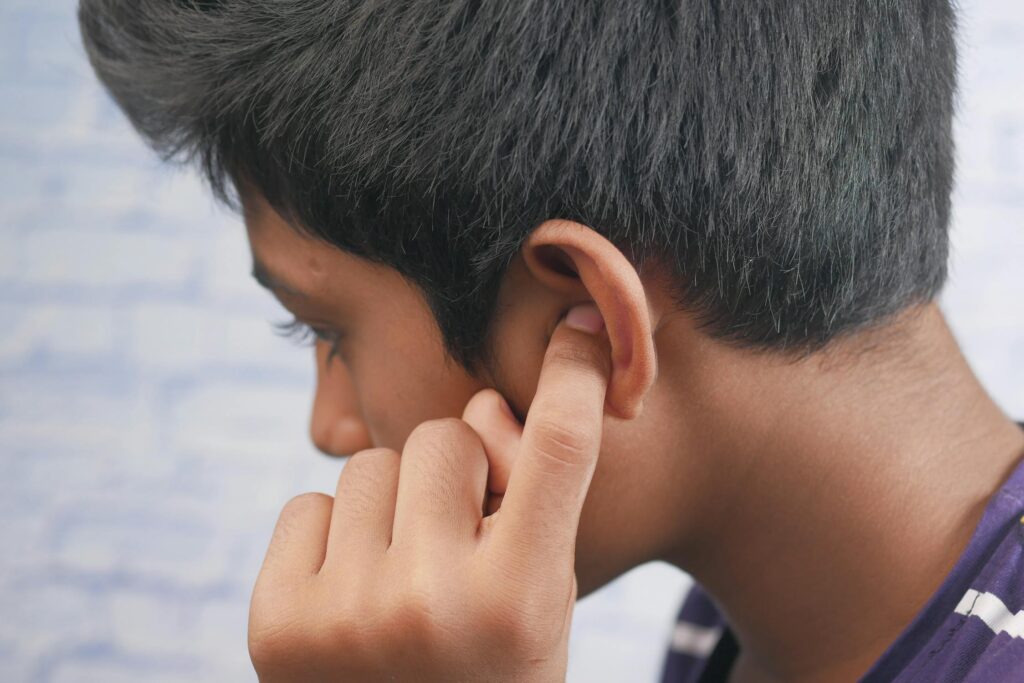Autism Spectrum Disorder (ASD) is characterized by a range of challenges, including sensory sensitivities that can significantly impact daily life. One particularly challenging aspect for some children with autism is sensitivity to certain sounds, including the sound of people eating. Understanding the underlying reasons for this sensitivity and implementing effective coping strategies can help children with autism navigate their auditory environment more comfortably.
1. Autism and Auditory Sensitivity

Auditory sensitivity, or hyperacusis, is a common experience among individuals with autism. The neurological differences associated with autism can result in an amplified perception of sound, making certain noises seem louder, more intense, or more intrusive than they would to neurotypical individuals. This heightened sensitivity to auditory stimuli can lead to discomfort, anxiety, or even physical pain in response to everyday sounds that others may not find bothersome.
For children with autism, auditory sensitivity can manifest in various ways, including difficulty tolerating loud noises, sensitivity to specific frequencies or pitches, and aversion to certain sounds or environments. The sound of people eating is one example of a common trigger for children with autism, which can evoke strong emotional or physical reactions due to its perceived intensity.
2. Examples of Sound Sensitivity

Children with autism may exhibit sensitivity to a wide range of sounds in their environment. Some common examples of sounds that may be distressing or overwhelming for children with autism include:
- Loud noises: Sudden or unexpected loud noises, such as sirens, alarms, or fireworks, can trigger anxiety or sensory overload in children with autism.
- Repetitive sounds: Repetitive sounds, like humming, tapping, or ticking clocks, can be particularly bothersome for children with autism, disrupting their concentration or causing irritability.
- High-pitched sounds: Some children with autism may be sensitive to high-pitched sounds, such as squeaky toys, whistles, or screeching brakes, which can be perceived as piercing or painful.
- Background noise: Busy or crowded environments with multiple sources of noise, such as restaurants, shopping malls, or classrooms, can be overwhelming for children with autism, making it difficult for them to filter out irrelevant sounds and focus on important auditory cues.
The sound of people eating is another example of a common trigger for children with autism, which can provoke intense discomfort or distress due to its repetitive and unpredictable nature.
3. Strategies to Cope

Managing auditory sensitivity in children with autism requires a combination of understanding, patience, and proactive support from caregivers, educators, and therapists. Some effective strategies to help children cope with the sound of people eating and other auditory triggers include:
- Creating a quiet eating environment: Designating a quiet, calm space for meals can help reduce auditory distractions and provide a more comfortable eating experience for children with autism. Minimizing background noise, such as turning off the TV or playing soothing music, can also help create a more relaxed atmosphere.
- Using noise-canceling headphones: Providing children with noise-canceling headphones or ear defenders can help reduce the intensity of sounds, including the sound of people eating, allowing them to enjoy meals without feeling overwhelmed or anxious.
- Implementing visual supports: Using visual supports, such as picture schedules, social stories, or visual timers, can help children with autism anticipate mealtime routines and transitions, reducing anxiety and promoting independence.
- Offering alternative mealtime activities: Providing children with sensory-friendly activities, such as coloring, puzzles, or fidget toys, can help distract them from the sound of people eating and provide a positive outlet for sensory input.
- Encouraging self-regulation strategies: Teaching children with autism self-regulation techniques, such as deep breathing, progressive muscle relaxation, or mindfulness exercises, can empower them to manage their sensory experiences and cope more effectively with auditory triggers.
4. Gradual Exposure

Gradual exposure to challenging sounds, such as the sound of people eating, can help desensitize children with autism over time and increase their tolerance to auditory stimuli. By gradually introducing these sounds in a controlled and supportive environment, children can learn to associate them with positive experiences and reduce their anxiety or discomfort.
Parents and caregivers can gradually expose children to the sound of people eating by incorporating it into everyday activities, such as playing recordings of mealtime sounds during playtime or incorporating snack breaks into structured routines. Gradually increasing exposure to these sounds while providing support and encouragement can help children with autism become more accustomed to them and develop coping strategies to manage their sensory experiences.
5. Normalizing Everyday Sounds

In addition to implementing coping strategies and gradual exposure techniques, it’s essential to normalize everyday sounds and foster a positive attitude towards sensory diversity. By promoting acceptance and understanding of auditory sensitivity in children with autism, we can create a more inclusive environment where differences are celebrated and accommodated.
Parents, educators, and peers can play a crucial role in normalizing everyday sounds by modeling positive attitudes and behaviors towards sensory diversity, advocating for inclusive practices, and providing support and encouragement to children with autism. By fostering a culture of acceptance and understanding, we can help children with autism feel more comfortable and confident in their sensory experiences and empower them to thrive in a world that may sometimes feel overwhelming.
In conclusion, auditory sensitivity is a common challenge for children with autism, affecting their daily lives and experiences. By understanding the underlying reasons for auditory sensitivity, implementing effective coping strategies, and promoting acceptance and understanding of sensory diversity, we can support children with autism in navigating their auditory environment more comfortably and confidently. Through patience, compassion, and proactive support, we can create a more inclusive and accommodating environment where all children can thrive.

